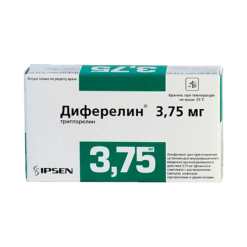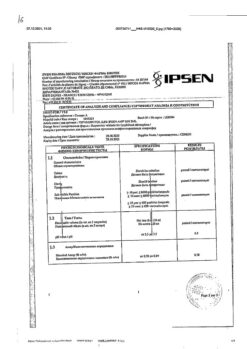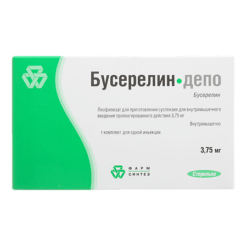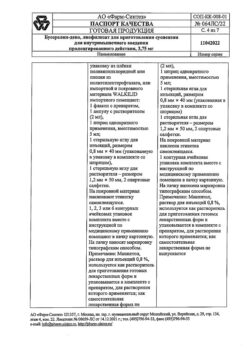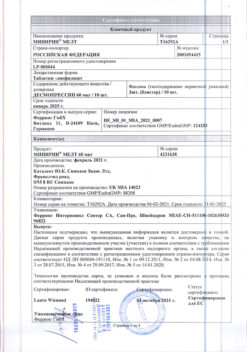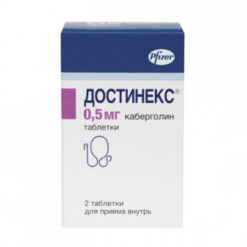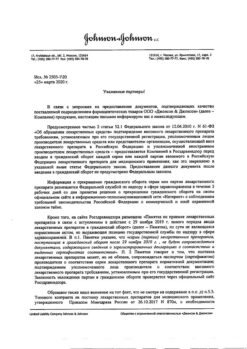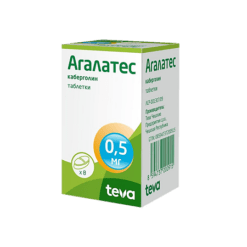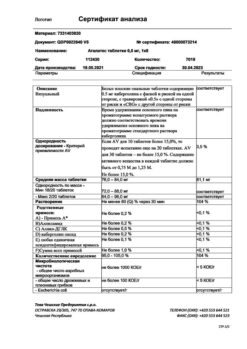No products in the cart.
Pabal 100 µg/ml 1 ml, 5 pcs.
€1.00
Out of stock
(E-mail when Stock is available)
Description
Carbetocin (1-deamino-1-monocarba-(2-0-methyltyrosine)-oxitocin) is a long-acting oxytocin agonist.
Like oxytocin, carbetocin selectively binds to oxytocin receptors in the uterine smooth muscle, stimulates rhythmic uterine contractions, increases the frequency of contractions and increases the tone of uterine muscles. In the postpartum uterus carbetocin increases the speed and strength of spontaneous uterine contractions.
After administration of carbetocin, uterine contractions become faster, and after two minutes there is a sharp contraction. A single dose of carbetocin (100 mcg) is enough to maintain adequate uterine contractions to prevent uterine atony and heavy bleeding, which can be compared to the administration of oxytocin for several hours.
Pharmacokinetics
Distribution. Cmax in plasma is reached within 15 min after administration and is (1035±218) pg/mL within 60 min. Carbetocin penetrates into breast milk, with a Cmax approximately 56 times lower than in plasma after 120 min.
Metabolism. Similar to oxytocin, carbetocin is hydrolyzed by proteinases.
Elimation. The excretion of carbetocin is biphasic with linear pharmacokinetics in the dose range of 400-800 µg. T1/2 is about 40 min. Renal clearance of the unchanged form is low, less than 1% of the administered dose is excreted unchanged by the kidneys.
Indications
Indications
Prevention of uterine atony after extraction of the baby during operative delivery by caesarean section; prevention of uterine atony in women with an increased risk of postpartum hemorrhage after natural childbirth.
Active ingredient
Active ingredient
Composition
Composition
1 ampoule contains:
The active ingredient:
Carbetocin 100 mcg;
Associates:
Sodium chloride – 9 mg;
Ical acetic acid – to pH 3.8;
water for injection – up to 1 ml.
How to take, the dosage
How to take, the dosage
Pabal is only administered once by IV or IM after the baby is born. The drug should not be used repeatedly. Pabal should not be mixed with other drugs in the same syringe. Do not use the drug if insoluble particles are observed in the solution or the solution has changed color. Unused product should be disposed of.
In a cesarean section, one dose of Pabal (100 mcg/ml) is given immediately after the baby is delivered, preferably before the placenta separates.
In a vaginal delivery, one dose of Pabal (100 mcg/ml) is injected into the upper thigh immediately after the expulsion of the placenta.
Interaction
Interaction
There have been no cases of drug interactions with analgesics, antispasmodics and agents used for epidural or spinal anesthesia. However, Pabal should not be mixed in the same syringe with other drugs.
Because carbetocin is analogous to oxytocin, interactions characteristic of oxytocin may occur. A sharp rise in BP is possible when Pabal is administered 3-4 hours after prophylactic use of vasoconstrictors in combination with caudal-conductive anesthesia. It is also possible to increase BP and enhance the effect of carbetocin when Pabal is used together with ergot preparations (methyl ergometrine).
Pabal should not be used concomitantly with PG due to the possible potentiation of carbetocin. If simultaneous use is nevertheless necessary, the patient should be monitored at all times.
Inhaled anesthesia agents (halothane, cyclopropane) may increase the hypotensive effect and reduce the effect of Pabal on the uterus. If Pabal is used simultaneously with oxytocin, arrhythmia may occur.
Special Instructions
Special Instructions
Pabal is administered by injection/m or intravenous injection only in specialized obstetric wards adequately equipped and staffed by qualified and experienced nurses.
Pabal should not be used at any stage of labor prior to birth because the stimulating effect of carbetocin on the uterus after a single injection of 100 mcg/ml lasts several hours, in contrast to the rapid decrease in the effect of oxytocin. In case of persistent uterine bleeding after the use of Pabal, causes such as undivided placental fragments and clotting disorders should be excluded. Pabal is administered only once. In cases of hypotension or uterine atony accompanied by heavy bleeding, oxytocin and/or ergometrine should be considered.
As Pabal has some antidiuretic action, the first signs of hyponatremia (drowsiness, apathy and headache) should be detected to prevent seizures and coma.
Impact on the ability to drive vehicles and mechanisms requiring high concentration. Not applicable, given the indications for use.
Contraindications
Contraindications
With caution: carbetocin has some antidiuretic action. Therefore, the possibility of hyponatremia should be considered when using Pabal, especially in patients receiving large volumes of IVs. Attention should be paid to the first signs of hyponatremia (drowsiness, apathy, headache) to prevent seizures and coma.
Pabal should be used with caution in migraine, bronchial asthma and cardiovascular disease, as well as in any condition in which a rapid increase in extracellular fluid volume may provoke complications associated with hyperhydration. The decision to use Pabal should be made by the physician taking into account the risk-benefit ratio in each individual case. Continuous BP monitoring is necessary in patients with severe gestosis of the 2nd half of pregnancy, eclampsia and preeclampsia.
Side effects
Side effects
Hematopoietic and lymphatic system disorders: anemia.
Nervous system disorders: headache, tremor; dizziness.
Cardiovascular system: increase in blood pressure, facial hyperemia.
Respiratory system: chest pain, shortness of breath.
Gastrointestinal disorders: nausea, abdominal pain; metallic taste in the mouth, vomiting.
Skin disorders: itching.
Muscular system disorders: back pain.
General reactions: fever; chills, pain at the injection site.
Overdose
Overdose
Symptoms: Cases of overdose with a single injection of the recommended dose of 100 mcg/ml are very rare. Pabal administration at a dose of 800 µg/ml may cause tachycardia. Violation of the recommended dosing regimen may provoke myometrial hypertonicity regardless of the presence or absence of hypersensitivity to carbetocin or postpartum bleeding. In severe cases, an overdose of Pabal may lead to hyponatremia and hyperhydration, especially in combination with simultaneous large volume IV infusion of solutions performed during delivery.
Treatment: consists of symptomatic and supportive therapy. If signs or symptoms of overdose occur, the laboring woman should be provided with adequate oxygenation. In case of water intoxication it is necessary to limit fluid intake, stimulate diuresis, perform correction of electrolyte disturbances, and pay attention to clinical signs of hyponatremia (somnolence, apathy, headache) to prevent seizures and coma.
Pregnancy use
Pregnancy use
Pabal use is contraindicated during pregnancy and childbirth until after birth.
A small amount of carbetocin may pass into the mother’s breast milk and then be destroyed by the enzymes of the newborn.
Additional information
| Shelf life | 2 years |
|---|---|
| Conditions of storage | At 2-8 °C (do not freeze) |
| Manufacturer | Ferring GmbH, Switzerland |
| Medication form | solution for injections and infusions |
| Brand | Ferring GmbH |
Related products
Buy Pabal 100 µg/ml 1 ml, 5 pcs. with delivery to USA, UK, Europe and over 120 other countries.



